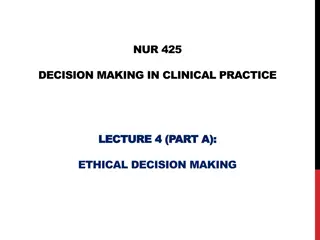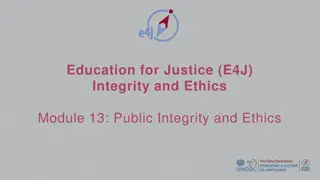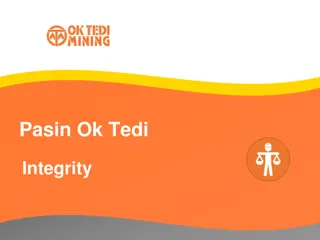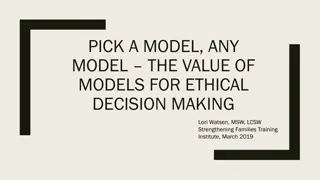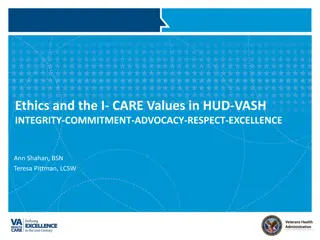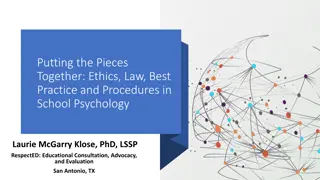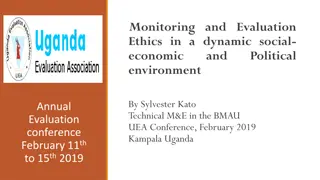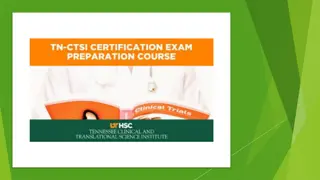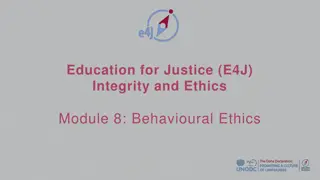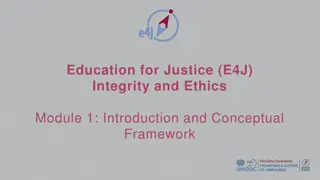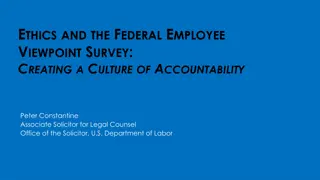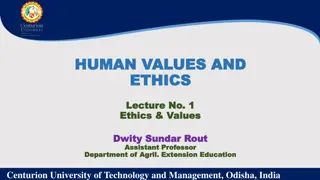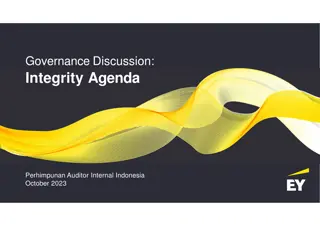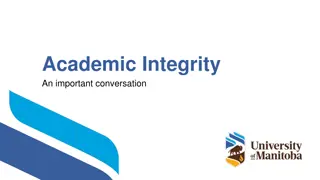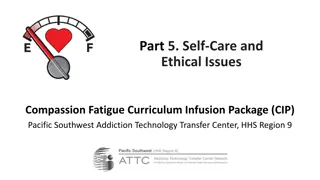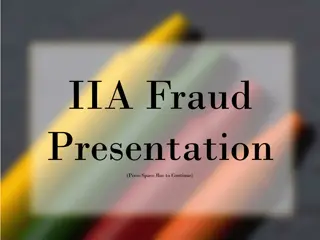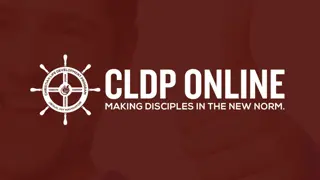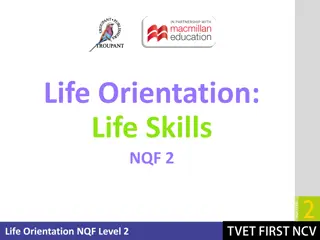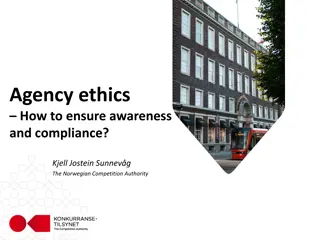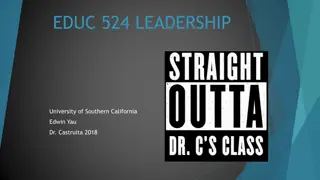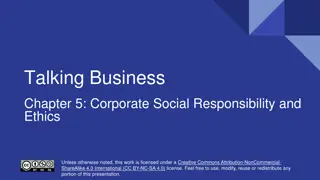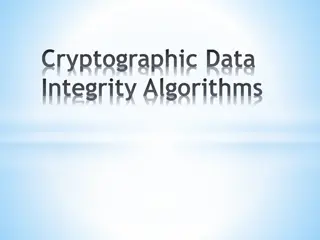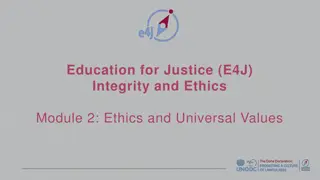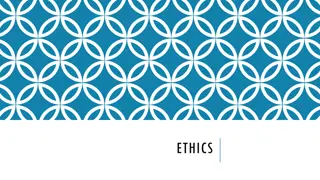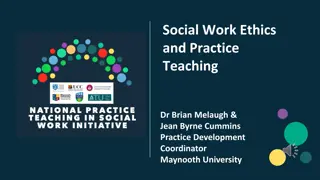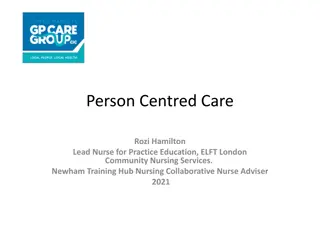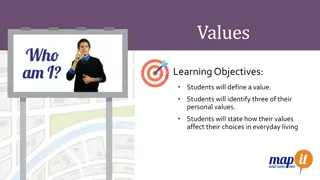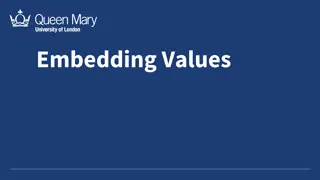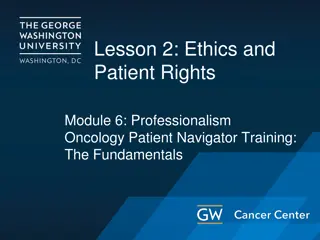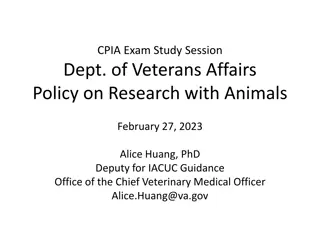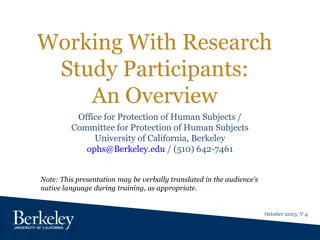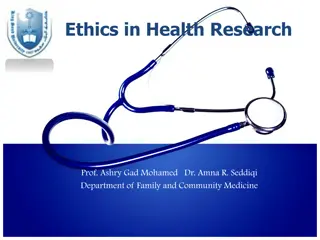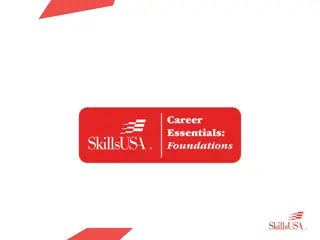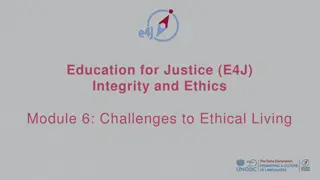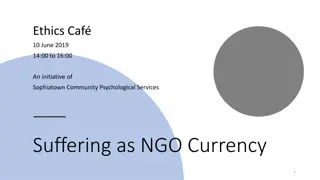Strategies for Ethical Actions: Enhancing Integrity and Values in Organizations
Explore the Education for Justice (E4J) Integrity and Ethics Module focusing on strategies for ethical actions, enabling environments, Giving Voice to Values (GVV), and practical steps to foster ethical cultures in organizations. Learn to overcome psychological barriers, develop ethical scripts, and become effective change agents through peer-coaching techniques.
Download Presentation

Please find below an Image/Link to download the presentation.
The content on the website is provided AS IS for your information and personal use only. It may not be sold, licensed, or shared on other websites without obtaining consent from the author. Download presentation by click this link. If you encounter any issues during the download, it is possible that the publisher has removed the file from their server.
E N D
Presentation Transcript
Education for Justice (E4J) Integrity and Ethics Module 7: Strategies for Ethical Actions
Agenda Class overview (10 minutes) Enabling environments (50 mins) Giving Voice to Values (GVV) (60 mins) Strategies for Acting Ethically (50 mins) Conclusion (10 minutes)
Learning Outcomes Upon completion of this module students should be able to: Understand how to overcome common psychological and contextual impediments for taking ethical action Adopt strategies for taking ethical action that have been developed in different sectors and areas Craft, refine and deliver scripts for enacting ethical action and build the habit to do so Become more effective change agents Apply peer-coaching techniques around workplace ethics conflicts
Enabling environments Organizational approaches to fostering ethical environments: Just culture No-blame culture Speak-up culture
Enabling environments E1: Building a no-blame, just culture in an organization What are basic principles of a no-blame culture? What steps would you recommend for developing a no-blame culture in the customs authority? How can the no-blame culture be implemented in practice? How can the customs authority raise awareness among its staff for the no- blame culture?
Giving Voice to Values (GVV) Introduction to GVV: Focuses on post-decision making stage Provides a model decision for how the situation should be handled Offers several practice and rehearsal techniques Many ways to voice values
Giving Voice to Values (GVV) E2: A tale of two stories Part 1: Reflection on positive example o What did you do, and what was the impact? o What motivated you to speak up and act? o How satisfied are you with your response? How would you like to have responded? (This question is not about rejecting or defending past actions, but rather about imagining your ideal scenario). o What made it easier for you to speak/act (the Enablers ) and what made it more difficult (the Disablers )? Were these things within your own control? Were they within the control of others?
Giving Voice to Values (GVV) E2: A tale of two stories Part 2: Reflection on negative example o What happened? o Why didn t you speak up or act? What would have motivated you to do so? o How satisfied are you with your response? How would you like to have responded? (This question is not about rejecting or defending past actions, but rather about imagining your ideal scenario.) o What would have made it easier for you to speak/act (the Enablers ) and what made it more difficult (the Disablers )? Are these things within your own control? Are they within the control of others?
Strategies for Acting Ethically (exercises) Exercise 3: Peer coaching and the value of feedback Exercise 4: Ethical business practices
Core reading I Boysen, Philip G. (2013). Just culture: a foundation for balanced accountability and patient safety. Ochsner Journal, vol. 13, No. 3, pp. 400 406. Available from https://www.ncbi.nlm.nih.gov/pmc/articles/PMC3776518/. Gentile, Mary C. (2017). Giving Voice to Values: How to Counter Rationalizations Rationally. Available from https://ideas.darden.virginia.edu/2017/10/giving-voice-to-values-how-to-counter-rationalizations-rationally/. Gentile, Mary C. (2016). Talking About Ethics Across Cultures: Five ways to help people act on their values, no matter the context. Harvard Business Review, 23 December. Available from https://hbr.org/2016/12/talking-about-ethics-across- cultures. Gentile, Mary C. (2010). Ways of Thinking About Values in the Workplace. Available from http://store.darden.virginia.edu/Syllabus%20Copy/Ways-of-Thinking-About-Our-Values.pdf. Haidt, Jonathan (2006). The Happiness Hypothesis: Finding Modern Truth in Ancient Wisdom. New York: Basic Books. See especially pp. 145-149. Available from http://www.happinesshypothesis.com.
Core reading II Khatri, Naresh, Gordon Brown and Lanis Hicks (2009). From a blame culture to a just culture in health care. Health Care Management Review, vol. 34, pp. 312-322. Available from https://www.ncbi.nlm.nih.gov/pubmed/19858916 Kish-Gephart, Jennifer J. and others (2009). Silenced by fear: the nature, sources and consequences of fear at work. Research in Organizational Behavior,vol. 29, No. 1, pp. 163 193. Available from https://www.researchgate.net/publication/238382691_Silenced_by_fear Morrison, Elizabeth Wolfe (2014). Employee voice and silence. Annual Review of Organizational Psychology and Organizational Behavior, vol 1, pp. 173-197. Available from https://www.researchgate.net/publication/275508087_Employee_Voice_and_Silence Alliance for Integrity (2016) No eXcuses! Countering the 10 Most Common Excuses for Corrupt Behaviour: A Pocket Guide for Business Practitioners. Available from https://www.allianceforintegrity.org/wAssets/docs/publications/No- eXcuses/GH-No-eXcuses-Pocket-Guide.pdf


